
Tacna: The Sun-Kissed Gateway of Southern Peru
Discover Tacna, Peru's sun-drenched city rich in history, culture, and natural beauty. Explore colonial architecture, ancient petroglyphs, and vibrant local markets.
Tacna is a city with a rich history and vibrant culture, located in the southernmost region of Peru. Known for its sunny weather year-round, this city offers a warm welcome to tourists seeking both relaxation and adventure. Tacna's historical significance is evident in its many monuments, museums, and colonial architecture, which tell the story of Peru's fight for independence. A stroll through the city's main square, Plaza de Armas, reveals a delightful blend of old and new. Visitors can admire the ornate Cathedral of Tacna, constructed in the 19th century, and the impressive Parabolic Arch, a symbol of the city's resilience and pride. The bustling markets nearby offer a chance to experience local flavors and crafts, making it an excellent spot for souvenir shopping. For those interested in natural beauty, Tacna is surrounded by stunning landscapes. The nearby Miculla Petroglyphs, ancient rock carvings dating back thousands of years, provide a fascinating glimpse into pre-Columbian history. The city is also a gateway to the Andean highlands and the Atacama Desert, offering opportunities for hiking, bird-watching, and exploring unique ecosystems. Whether you're a history buff, a nature lover, or simply in search of a sunny getaway, Tacna has something special to offer.
Local tips in Tacna
- Visit the Central Market early in the morning for the freshest produce and unique local delicacies.
- Don't miss the opportunity to try Tacna's famous picante a la tacneña, a spicy dish unique to the region.
- Sunscreen is a must! Tacna's sunny climate means UV levels can be high year-round.
- Consider hiring a local guide to explore the Miculla Petroglyphs for a richer understanding of their historical significance.
- Check out the local wine and pisco distilleries for a taste of Tacna's unique beverages.
Tacna: The Sun-Kissed Gateway of Southern Peru
Tacna is a city with a rich history and vibrant culture, located in the southernmost region of Peru. Known for its sunny weather year-round, this city offers a warm welcome to tourists seeking both relaxation and adventure. Tacna's historical significance is evident in its many monuments, museums, and colonial architecture, which tell the story of Peru's fight for independence. A stroll through the city's main square, Plaza de Armas, reveals a delightful blend of old and new. Visitors can admire the ornate Cathedral of Tacna, constructed in the 19th century, and the impressive Parabolic Arch, a symbol of the city's resilience and pride. The bustling markets nearby offer a chance to experience local flavors and crafts, making it an excellent spot for souvenir shopping. For those interested in natural beauty, Tacna is surrounded by stunning landscapes. The nearby Miculla Petroglyphs, ancient rock carvings dating back thousands of years, provide a fascinating glimpse into pre-Columbian history. The city is also a gateway to the Andean highlands and the Atacama Desert, offering opportunities for hiking, bird-watching, and exploring unique ecosystems. Whether you're a history buff, a nature lover, or simply in search of a sunny getaway, Tacna has something special to offer.
When is the best time to go to Tacna?
Iconic landmarks you can’t miss
Paseo Cívico de Tacna
Explore the lush landscapes and rich history at Paseo Cívico de Tacna, a vibrant park and essential tourist attraction in the heart of Tacna, Peru.

Tacna Cathedral
Explore Tacna Cathedral, a stunning architectural marvel and cultural landmark in Tacna, Peru. Immerse in history and faith at this iconic attraction.

Restaurant la Glorieta Tacneña
Experience the rich flavors of Tacna at Restaurant la Glorieta Tacneña, where local culinary traditions come to life in a vibrant atmosphere.
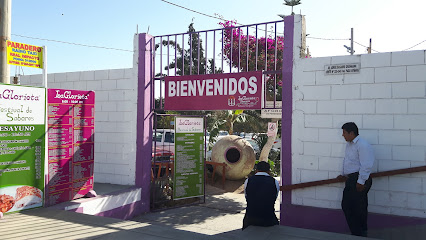
Casa Andina Select Tacna
Discover the perfect blend of comfort and culture at Casa Andina Select Tacna, your gateway to exploring the vibrant city of Tacna.

Tacna Locomotive park
Explore the historic Tacna Locomotive Park, a hidden oasis filled with lush landscapes and fascinating locomotives in the heart of Tacna, Peru.

Alto de la Alianza
Explore the rich history and stunning monuments at Alto de la Alianza, a captivating open-air museum in Peru honoring the heroes of the past.

Petroglifos de Miculla
Discover the ancient petroglyphs of Petroglifos de Miculla, a stunning open-air museum in Tacna showcasing Peru's archaeological heritage.

Tacna Parabolic Arch
Discover the Tacna Parabolic Arch, a stunning memorial that celebrates the rich history and culture of Tacna, Peru, attracting tourists with its beauty and significance.

Miculla
Discover comfort and convenience at Miculla Hotel in Tacna, where warm hospitality meets vibrant local culture for an unforgettable stay.

National Railway Museum
Discover the National Railway Museum in Tacna, where Peru's rich railway history comes alive through remarkable exhibits and vintage locomotives.
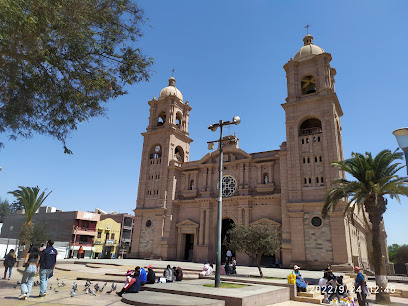
Parque de los Dinosaurios
Discover the thrilling world of dinosaurs at Parque de los Dinosaurios in Tacna, where education meets fun in an unforgettable amusement park experience.

Bab-ul-Islam Mosque
Explore the serene beauty of Bab-ul-Islam Mosque in Tacna, a stunning testament to Islamic architecture and community spirit.

Plaza Juan Pablo II
Explore the lush landscapes and vibrant culture at Plaza Juan Pablo II, a serene park and tourist attraction in Tacna, Peru.
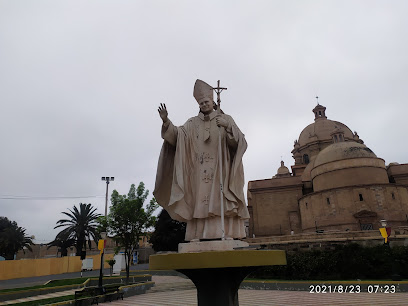
Bosque Municipal de Tacna
Experience the lush greenery and tranquility of Bosque Municipal de Tacna, a serene park perfect for relaxation and nature walks.

Tacna Historical Museum
Explore the Tacna Historical Museum, where the rich history of Tacna comes alive through captivating exhibits and engaging cultural displays.

Unmissable attractions to see
Paseo Cívico de Tacna
Explore the lush landscapes and historical significance of Paseo Cívico de Tacna, a must-visit park for tourists in the heart of Tacna.

Catedral de Tacna
Explore the architectural beauty and historical depth of Catedral de Tacna, a must-visit cultural landmark in Peru.

Plaza Zela
Experience the serene beauty and rich history of Plaza Zela, a tranquil park in the heart of Tacna offering lush landscapes and cultural insights.

Tacna Locomotive park
Explore Tacna Locomotive Park: A blend of history, culture, and serene landscapes perfect for relaxation and exploration.
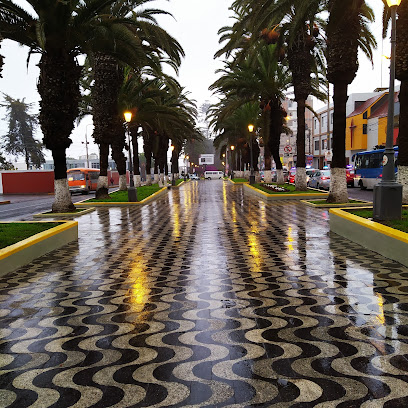
Topiarios Animales Park
Explore Topiarios Animales Park in Tacna, where whimsical topiary art meets lush greenery for a family-friendly adventure.

Paseo de las Aguas
Explore the beauty and culture of Tacna at Paseo de las Aguas, a serene riverside promenade perfect for relaxation and local experiences.

Alto de la Alianza
Explore the historical significance of Alto de la Alianza, an open-air museum that honors the valor of soldiers in Peru's War of the Pacific.

Petroglifos de Miculla
Explore the ancient rock carvings of Petroglifos de Miculla, a captivating open-air museum in Tacna, revealing the artistic heritage of Peru's ancient civilizations.
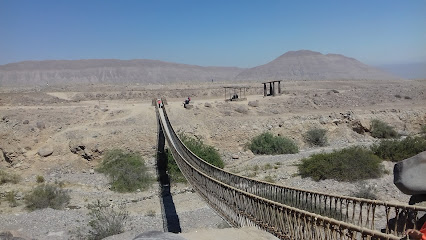
Tacna Parabolic Arch
Discover the Tacna Parabolic Arch, a stunning memorial that embodies resilience and beauty in the heart of Tacna, Peru.

Rio Lluta Humedal
Explore the serene beauty of Rio Lluta Humedal, a wildlife refuge in Arica, offering breathtaking landscapes and diverse wildlife experiences.

National Railway Museum
Discover the legacy of Peru's railways at the National Railway Museum in Tacna, where history and innovation intersect in a captivating experience.

Bab-ul-Islam Mosque
Experience the tranquility and architectural beauty of Bab-ul-Islam Mosque in Tacna, Peru, a cultural landmark inviting spiritual and aesthetic appreciation.

Bosque Municipal de Tacna
Discover the serene beauty of Bosque Municipal de Tacna, a lush park perfect for relaxation, exploration, and connecting with nature in the heart of the city.

Tacna Park
Experience the tranquility and cultural richness of Tacna Park, the perfect urban oasis in the heart of Tacna, Peru.

Tacna Historical Museum
Discover Tacna's rich cultural heritage at the Tacna Historical Museum, a must-visit for history enthusiasts and curious travelers alike.
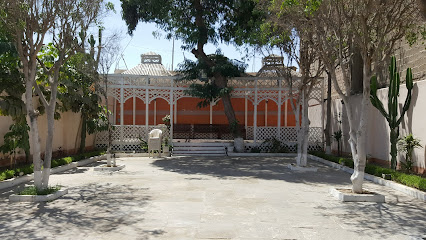
Essential places to dine
Restaurant la Glorieta Tacneña
Experience authentic Peruvian cuisine at Restaurant la Glorieta Tacneña in Tacna – where every dish tells a story.

Restaurant Muelle Sur
Experience authentic Peruvian cuisine at Restaurant Muelle Sur in Tacna – where every meal tells a story.

El Pollo Pechugon
Savor the authentic taste of Peru at El Pollo Pechugon in Tacna – renowned for its delicious rotisserie chicken and welcoming atmosphere.

Pollos y Carnes Chave
Experience authentic Peruvian flavors at Pollos y Carnes Chave – where delicious chicken meets rich Creole traditions.

Castelino restaurant pasteleria
Discover the flavors of Peru at Castelino Restaurant & Pasteleria in Tacna - where tradition meets modern dining.

Restaurant Urus
Discover the authentic flavors of Peru at Restaurant Urus in Tacna—where every dish tells a story.
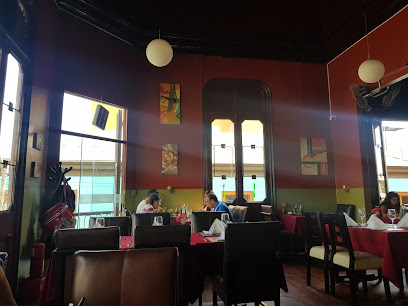
Mulato Restomar
Experience authentic Peruvian cuisine at Mulato Restomar in Tacna - a culinary haven for travelers seeking local flavors.

El Cebillano
Discover the flavors of Peru at El Cebillano in Tacna – where traditional cuisine meets warm hospitality.

Restaurant La Frontera - Luau
Discover the rich culinary heritage of Peru at Restaurant La Frontera - Luau in Tacna, offering authentic dishes in a vibrant atmosphere.

Restaurante Mar Adentro
Discover the flavors of Peru at Restaurante Mar Adentro in Tacna—an unmissable destination for seafood lovers seeking authenticity.

La Peña Restaurante
Discover authentic Peruvian cuisine at La Peña Restaurante in Tacna – where tradition meets flavor in a vibrant setting.

LA CAVA DEL PARRILLERO
Experience the essence of Peruvian cuisine at La Cava Del Parrillero in Tacna, renowned for its grilled meats and welcoming atmosphere.

Entre Masas Cafe Restaurant
Experience the rich flavors of Peru at Entre Masas Cafe Restaurant in Tacna – where tradition meets innovation.

Tradiciones Peruanas
Experience authentic Peruvian cuisine at Tradiciones Peruanas - a buffet restaurant in Tacna serving traditional flavors and fresh local ingredients.

Animales Nocturnos- Cocina Nikkei
Experience the exquisite fusion of Peruvian and Japanese flavors at Animales Nocturnos – Tacna's premier destination for Nikkei cuisine.

Markets, malls and hidden boutiques
Total Sport
Explore Total Sport in Tacna for stylish sportswear and casual clothing that caters to every taste, perfect for both fitness enthusiasts and everyday wear.

Casa Elida
Explore Casa Elida in Tacna for unique gifts and home goods that showcase the rich Peruvian culture and craftsmanship.

Tienda Avalanch Tacna
Explore diverse clothing styles at Tienda Avalanch Tacna, a vibrant shopping destination in Tacna, Peru, perfect for all fashion lovers.

Closet kawaii Style
Explore the enchanting world of kawaii fashion at Closet Kawaii Style in Tacna, where every accessory tells a charming story.

Tiendas El
Explore Tiendas El in Tacna for stylish clothing options, from formal wear to trendy youth apparel, all under one roof.
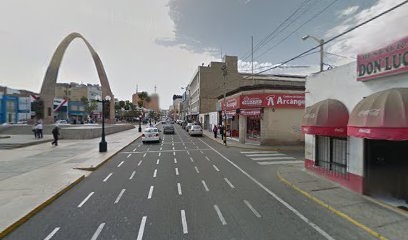
Boutique Mi Primer Bebé
Discover a charming baby clothing store in Tacna, Peru, with high-quality outfits and accessories for your little ones.

Dream Girls Boutique
Discover exquisite bridal and formal wear at Dream Girls Boutique in Tacna, where fashion meets elegance in a delightful shopping experience.

Tacna Mall
Explore Tacna Mall, the ultimate toy store and shopping destination in Tacna, Peru, offering joy and excitement for all ages.

Tacna Store
Explore the vibrant Tacna Store, a shopping paradise in Peru, offering diverse shops, delicious dining, and engaging entertainment for every traveler.

Lifestyles
Exciting clothing options await at Lifestyles in Tacna, where style meets affordability and local flair.

Ti Amo - ROPA PARA BEBE TACNA
Discover stylish and comfortable baby clothing at Ti Amo in Tacna, where quality meets charm in a delightful shopping experience.

Kafuca Shop
Explore Kafuca Shop in Tacna, Peru, a treasure trove for hobbyists with model kits, crafts, and collectibles waiting to inspire your next project.

D'SOPHIA Boutique
Discover unique fashion at D'SOPHIA Boutique in Tacna, where contemporary styles meet traditional Peruvian culture.

Estilo Bonita Tacna
Discover unique fashion pieces at Estilo Bonita Tacna, where modern style meets Peruvian flair in a vibrant shopping atmosphere.

Alejandro Boutique Tacna
Explore the unique fashion offerings at Alejandro Boutique Tacna, where local flair meets stylish apparel for the discerning traveler.

Essential bars & hidden hideouts
Mr. Mojito
Discover the vibrant atmosphere and delicious grilled flavors at Mr. Mojito in Tacna, a top spot for budget-friendly dining.

Munchner
Discover Tacna's nightlife at Munchner, a top pub offering artisanal drinks, delicious snacks, and a lively atmosphere for an unforgettable experience.

Mushna Bar
Discover the lively atmosphere and delicious flavors at Mushna Bar, Tacna's favorite gastropub for food and fun.

...
Discover Tacna's vibrant gastropub scene, where traditional Peruvian flavors meet modern culinary artistry in a lively atmosphere.

ROOFTOP77
Discover Rooftop77 in Tacna - where breathtaking views, refreshing cocktails, and vibrant atmosphere come together for an unforgettable experience.

Rústico Bar
Experience the vibrant nightlife of Tacna at Rústico Bar, where great drinks and lively ambiance come together for an unforgettable evening.

DKALETA RESTOBAR
Experience the lively nightlife at DKALETA RESTOBAR in Tacna, where delicious drinks and a vibrant atmosphere await.

IRISH BAR
Experience the charm of an authentic Irish bar in Tacna, offering a lively atmosphere, great drinks, and unforgettable nights.

CLUB69 RESTOBAR
Discover the electric atmosphere of CLUB69 RESTOBAR, Tacna's premier gay bar, where inclusivity and vibrant nightlife come together.

LA CATANA , RESTOBAR , MUSICA EN VIVO , KARAOKE , TRAGOS , HAMBURGUESAS , ALITAS
Experience the lively atmosphere of La Catana in Tacna, where delicious food meets live music and unforgettable nights.

Urban Cafe Bar
Experience the vibrant nightlife of Tacna at Urban Cafe Bar, where refreshing drinks meet a lively atmosphere in the heart of the city.

Bohemia 69
Discover the vibrant atmosphere of Bohemia 69, where Tacna's nightlife comes alive with delicious drinks and friendly vibes.

Centrica Restobar
Discover the vibrant atmosphere of Centrica Restobar in Tacna, where delicious drinks and local culture come together for an unforgettable experience.

Santuario Bar
Discover the vibrant nightlife of Tacna at Santuario Bar, where local flavors meet a lively atmosphere for an unforgettable experience.

Hong Kong Bar
Experience the vibrant flavors of Tacna at Hong Kong Bar, where delicious grilled dishes and a lively atmosphere await every visitor.

Local Phrases
-
- Hello¡Hola!
[o-la] - Goodbye¡Adiós!
[a-dios] - YesSí
[see] - NoNo
[no] - Please/You're welcomePor favor/De nada
[por fa-vor/de na-da] - Thank youGracias
[gra-cias] - Excuse me/SorryPerdón/Lo siento
[per-don/lo see-en-to] - How are you?¿Cómo estás?
[ko-mo es-tas] - Fine. And you?Bien. ¿Y tú?
[byen. ee too] - Do you speak English?¿Hablas inglés?
[a-blas in-gles] - I don't understandNo entiendo
[no en-tien-do]
- Hello¡Hola!
-
- I'd like to see the menu, pleaseMe gustaría ver el menú, por favor
[me gus-ta-ria ver el me-nu, por fa-vor] - I don't eat meatNo como carne
[no ko-mo kar-ne] - Cheers!¡Salud!
[sa-lud] - I would like to pay, pleaseMe gustaría pagar, por favor
[me gus-ta-ria pa-gar, por fa-vor]
- I'd like to see the menu, pleaseMe gustaría ver el menú, por favor
-
- Help!¡Ayuda!
[a-yu-da] - Go away!¡Vete!
[ve-te] - Call the Police!¡Llama a la Policía!
[ya-ma a la po-li-sia] - Call a doctor!¡Llama a un médico!
[ya-ma a un me-di-ko] - I'm lostEstoy perdido
[es-toy per-di-do] - I'm illEstoy enfermo
[es-toy en-fer-mo]
- Help!¡Ayuda!
-
- I'd like to buy...Me gustaría comprar...
[me gus-ta-ria kom-prar] - I'm just lookingSolo estoy mirando
[so-lo es-toy mi-ran-do] - How much is it?¿Cuánto cuesta?
[kwanto kues-ta] - That's too expensiveEsto es muy caro
[es-to es mui ka-ro] - Can you lower the price?¿Puedes bajar el precio?
[pwe-des ba-har el pree-sio]
- I'd like to buy...Me gustaría comprar...
-
- What time is it?¿Qué hora es?
[ke o-ra es] - It's one o'clockEs la una
[es la u-na] - Half past (10)Las diez y media
[las djez ee me-dja] - MorningMañana
[ma-nya-na] - AfternoonTarde
[tar-de] - EveningNoche
[no-che] - YesterdayAyer
[a-yer] - TodayHoy
[hoi] - TomorrowMañana
[ma-nya-na] - 1Uno
[u-no] - 2Dos
[dos] - 3Tres
[tres] - 4Cuatro
[kwa-tro] - 5Cinco
[sinko] - 6Seis
[seis] - 7Siete
[syet-e] - 8Ocho
[o-cho] - 9Nueve
[nwe-ve] - 10Diez
[djez]
- What time is it?¿Qué hora es?
-
- Where's a/the...?¿Dónde está un/el...?
[don-de es-ta un/el] - What's the address?¿Cuál es la dirección?
[kwal es la di-rek-sion] - Can you show me (on the map)?¿Puedes mostrarme (en el mapa)?
[pwe-des mos-trar-me (en el ma-pa)] - When's the next (bus)?¿Cuándo es el próximo (autobús)?
[kwan-do es el pro-si-mo (au-to-bus)] - A ticket (to ....)Un boleto (a ....)
[un bo-le-to (a)]
- Where's a/the...?¿Dónde está un/el...?
History of Tacna
-
Before the arrival of the Spanish, the region of Tacna was inhabited by various indigenous cultures, primarily the Aymara and the Quechua. These civilizations were known for their advanced agricultural techniques and impressive architectural achievements, which can still be seen in the ruins scattered around the region.
-
Tacna was colonized by the Spanish in the 16th century. The Spaniards established 'San Pedro de Tacna' as an important colonial outpost. The city grew as a commercial hub due to its strategic location along the trade routes between the Andean highlands and coastal regions.
-
Tacna was a significant battleground during the War of the Pacific, a conflict involving Chile against Peru and Bolivia. Following the war, Tacna was occupied by Chilean forces. The Treaty of Ancón in 1883 ceded Tacna to Chile but left its final status to be determined by a plebiscite, which was delayed for decades.
-
After years of diplomatic negotiations and the failed plebiscite, the Treaty of Lima was signed in 1929. This treaty officially returned Tacna to Peruvian sovereignty, while Arica remained with Chile. The 'Day of Tacna' is celebrated every year on August 28th to commemorate this event.
-
Post-1929, Tacna experienced significant economic and cultural growth. The city became a hub for trade and a center for education and culture in southern Peru. The construction of various public buildings, museums, and cultural centers during this period played a crucial role in shaping the modern identity of Tacna.
-
Today, Tacna is a vibrant city known for its rich history, cultural diversity, and economic significance. It is a popular destination for tourists seeking to explore its historical landmarks, such as the Parabolic Arch and the Tacna Cathedral, as well as its bustling local markets and vibrant festivals.
Tacna Essentials
-
Tacna is located in southern Peru, near the Chilean border. The main entry point is the Coronel FAP Carlos Ciriani Santa Rosa International Airport, which offers domestic flights from Lima and other Peruvian cities. From Chile, you can cross the border at the Arica-Tacna border crossing, which is a popular route for travelers. Buses and taxis are available for the journey from Arica to Tacna, taking about an hour. Additionally, long-distance buses connect Tacna with major Peruvian cities like Arequipa, Puno, and Lima.
-
Tacna has a well-organized public transportation system, including buses and colectivos (shared taxis), which are the most common and economical way to get around the city. Taxis are also readily available and can be hailed on the street or booked via phone. For those looking to explore more independently, car rentals are available, but it's important to note that driving conditions in Peru can be challenging for foreigners. Walking is also a pleasant way to explore the city's central areas.
-
The official currency in Peru is the Peruvian Sol (PEN). Credit cards are widely accepted in hotels, restaurants, and larger stores, but it's advisable to carry cash for smaller establishments and markets. ATMs are available throughout Tacna, and many accept international cards. Currency exchange services are also available in the city center and at the border crossing with Chile.
-
Tacna is generally considered a safe city for tourists, but it is still important to take standard precautions. Avoid walking alone at night in unfamiliar or poorly lit areas, and be cautious with your belongings in crowded places like markets and bus stations. The central market area and the bus terminal can be hotspots for petty theft, so stay vigilant. Stick to well-known tourist areas and always use registered taxis.
-
In case of an emergency, dial 105 for police assistance and 116 for medical emergencies. Tacna has a number of hospitals and clinics that can provide medical care. It is recommended to have travel insurance that covers medical emergencies. For minor health issues, pharmacies are readily available where you can purchase over-the-counter medications. The police station and medical facilities are concentrated in the city center.
-
Fashion: Do dress modestly, especially when visiting religious sites. Avoid wearing overly revealing clothing. Religion: Do respect local customs and traditions. When visiting churches, dress conservatively and remain quiet. Public Transport: Do be respectful and give up your seat to elderly passengers. Don't eat or drink on public transport. Greetings: Do greet people with a handshake or a friendly smile. A 'Buenos días' (Good morning) or 'Buenas tardes' (Good afternoon) is always appreciated. Eating & Drinking: Do try local dishes such as 'picante a la tacneña' and 'adobo'. Don't refuse food or drink as it may be considered impolite.
-
To experience Tacna like a local, visit the local markets, such as Mercado Central, where you can buy fresh produce and traditional goods. Engage with locals, who are often friendly and willing to share stories about the city's history and culture. Don't miss the opportunity to relax at the thermal baths in the nearby town of Calientes. For a unique experience, take a stroll along Paseo Cívico and visit the historic Arco Parabólico. Enjoy the local cuisine at small family-owned restaurants for an authentic taste of Tacna.
Trending Landmark in Tacna
-
Paseo Cívico de Tacna
-
Tacna Cathedral
-
Restaurant la Glorieta Tacneña
-
Casa Andina Select Tacna
-
Tacna Locomotive park
-
Alto de la Alianza
-
Petroglifos de Miculla
-
Tacna Parabolic Arch
-
Miculla
-
National Railway Museum
-
Parque de los Dinosaurios
-
Bab-ul-Islam Mosque
-
Plaza Juan Pablo II
-
Bosque Municipal de Tacna
-
Tacna Historical Museum
Nearby Cities to Tacna
-
Things To Do in Arica
-
Things To Do in Arequipa
-
Things To Do in Copacabana
-
Things To Do in Puno
-
Things To Do in Iquique
-
Things To Do in La Paz
-
Things To Do in Cochabamba
-
Things To Do in Uyuni
-
Things To Do in Potosi
-
Things To Do in Cusco
-
Things To Do in Sucre
-
Things To Do in San Pedro de Atacama
-
Things To Do in Machu Picchu
-
Things To Do in Antofagasta
-
Things To Do in Ayacucho










